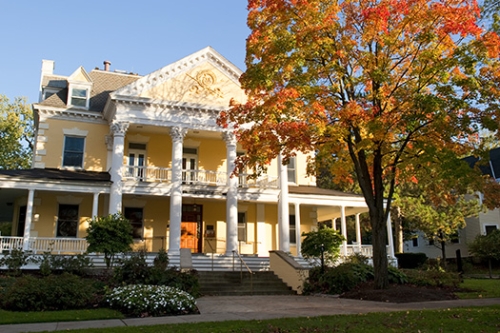Posted by Matt Malatesta
At Union, we don’t see a huge number of transfer students. In any given year, we might have about 30 transfers, relative to a class of about 570 incoming first-years.
But we really encourage transfer students and have stepped up our recruitment in that area over the past four years. We like to leave our door open for students to enter college in a variety of ways and at different times and ages. Transfer students are usually a little older and obviously come to us with very different experiences, which can be really valuable.
“Access” is a word we hear a lot these days on college campuses, and we all know students find different routes to a college education. So, if you have advisees who aren’t quite ready for a four-year college now, but want to pursue higher education, talk to them about the transfer path. It can be a good option for a number of reasons.
In some ways, it’s much easier for us in admissions to assess transfer students because the college academic experience is more standardized than the high school experience. But recruiting transfer students can be more challenging than finding talented high school students. Younger students have more guidance from counselors and other forces directing them to college; transfer students don’t always have those resources.
The challenge for us is to compete for the best transfer students in the nation and world.
How do such students find us? Our staff isn’t really set up to visit community colleges across the country. The web helps us recruit students nationwide and worldwide, and we participate in community college higher education fairs.
Transfer students come to Union for a variety of reasons at all stages in their college careers. Some are leaving other four-year colleges, where they didn’t have the experience they hoped for. Maybe they chose a large urban campus, but really wanted a small intimate campus.
Some transfer students are continuing educations they began at community college, building on their two-year degrees. I personally think community college can be a great start for some students. I have a brother who went to community college and transferred, and now has more advanced degrees than anyone in our family. It was the perfect path for him. He found his academic voice and passion in community college, then just kept going.
At Union, we have articulation agreements with several local community colleges, including Schenectady, Hudson Valley and Berkshire County.
Our challenge at Union and other four-year colleges is to find the best transfer students coming out of these schools and help them continue their degree paths.
Advisees should also know that our transfer students are considered for financial aid just like first-year students. Proportionally, they receive the same level of support. We’re as committed to helping transfer students fund their educations as we are to helping incoming first years.
I personally just signed off on ten new transfer students a few weeks ago, coming to us from schools as diverse as Boston University, Smith College, Emerson College and Mount Holyoke. There is no “typical” transfer student; the only thing they have in common is Union’s required 3.0 grade point average.
Here, we look forward to taking these diverse students across the finish line to their degrees. After all, there’s more than one way to get there – wherever “there” happens to be.
